Tamiya P-47D Thunderbolt
The P-47D “Hun Hunter XIV” is well-known, having appeared in the documentary “Thunderbolt” made by William Wyler and John Sturges during World War II.
Not much has been written about the 57th Fighter Group, the first USAAF unit to enter combat in the European Theater when their P-40Fs were launched from USS Ranger off the coast of Africa at the end of July 1942. After making their way across equatorial Africa to Egypt, the unit flew with the RAF at El Alamein and the campaign across North Africa, notably taking part in the “Palm Sunday Massacre,” during which the P-40 pilots shot down 75 German aircraft, some 60 of which were the vulnerable Ju-52 transports with Bf-110 and a few Bf-109 fighter escorts accounting for the remainder. It was the greatest victory by American fighters in the course of combat in the Mediterranean Theater.
The group then took part in the Sicilian campaign and on into Italy, transitioning from their well-worn P-40s to P-47s in December 1943. From then until the end of the war, they flew fighter-bomber missions.
An idea of just what being a P-47 fighter bomber pilot in Italy involved can be found in the words of Michael C. McCarthy, who arrived a 2nd Lieutenant pilot in May 1943, shortly after his 19th birthday, and survived to become Group Operations Officer and promoted to Major a month before his 21st birthday in March 1945: “ “The air-to-ground environment is brutal, life threatening, and consistently dangerous. The fighter pilot population in our squadron changed 400 percent from May 1943 until the end of the war in June 1945. We lost airplanes and pilots on a regular basis. We changed tactics, varied approaches and routes to targets, and emphasized surprise at every opportunity. In the end, we learned that you must fly down the enemy's gun barrel to destroy the target.”
Alone among American air force fighter units, the 57th Fighter Group followed a command philosophy that required proven ability in combat, not rank or time in the unit, be the basis for selection of element, section, flight, and squadron leaders. As McCarthy recalled, “We followed that policy without exception during my 27 months with the group. In some cases, a captain or major, newly assigned, might fly a complete tour as a wingman and fail every chance to lead an element or a section. It was odd to see a squadron of 16 ships led successfully by a young first lieutenant with a field grade officer riding his wing, but the policy saved lives, put the strongest pilots in lead positions, and produced exceptional combat results.” In the group, a new pilot was known as a “Sprog.” Once he had survived 15-20 missions and demonstrated some ability, he was promoted to “Sport.” If he survived half a tour, he became an “Old Sport.” Those “Old Sports” who showed skill as well as ability were promoted into unit leadership as positions opened through completion of tour, transfer or death, and were the “Wheels” of the group.
Among the group's “Wheels” was Gil Wymond, who eventually flew 16 “Hun Hunters” as he became one of the few original members to serve through the whole war over three combat tours. Born on September 23, 1919, in Louisville, Kentucky, he enlisted in the Aviation Cadet Program of the U.S. Army Air Corps on April 25, 1941, and was commissioned a 2d Lt and awarded his pilot wings at Kelly Field, Texas, on December 12, 1941. Among his classmates were George Preddy and John D. Landers.
Joining the 65th Fighter Squadron of the 57th Fighter Group at Bradley Field shortly before Christmas, 1941, he went aboard the aircraft carrier USS Ranger (CV-4) in July 1942. On July 19, 1942, the group was launched off The Gold Coast and arrived at Accra. They proceeded across equatorial Africa and up the Nile Valley to Cairo.
Between August 1942 and May 1945, Lt Col Wymond moved with his squadron through Egypt, Libya, Tunisia, Malta, Sicily, and Italy. He flew 153 combat missions, was credited with the destruction of three enemy aircraft in combat plus 2 probables, and served as Commanding Officer of the 65th Fighter Squadron from May 1943 to May 1945, with short periods on leave in the United States from July to September 1943, and May to June 1944.
After the war Lt Col Wymond took command of the 55th Fighter Squadron at Shaw AFB, South Carolina, in April 1949, and was killed in the crash of his F-84 Thunderjet on May 11, 1949.
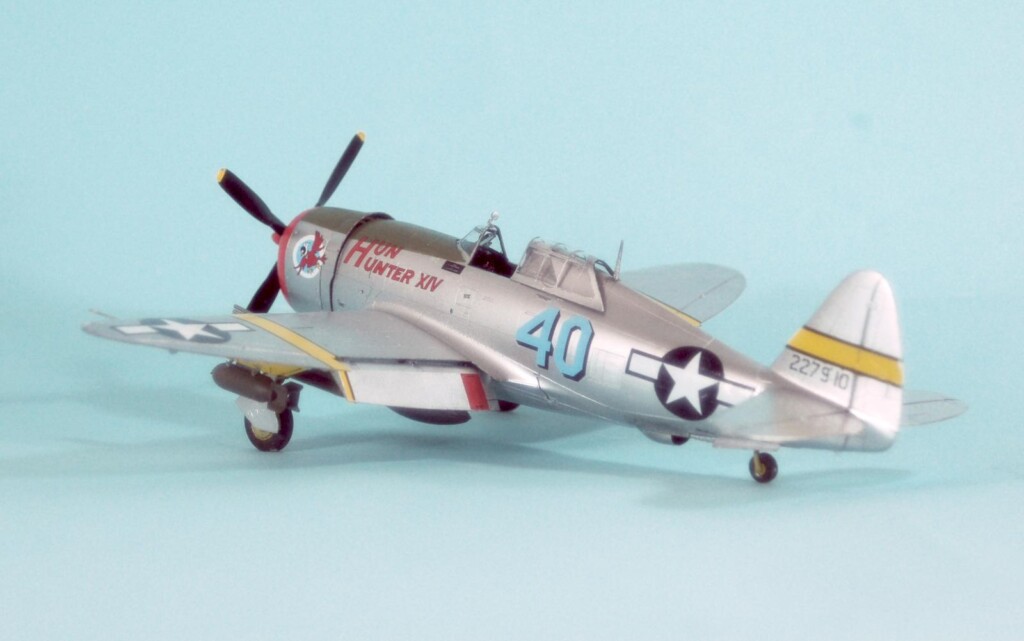
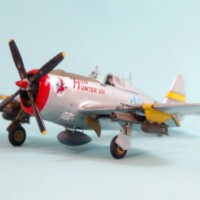
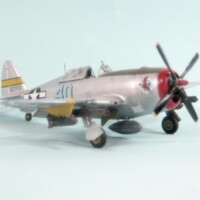
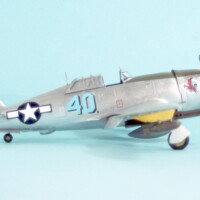
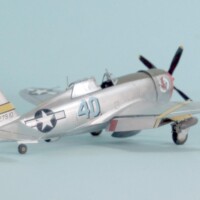
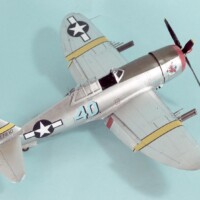
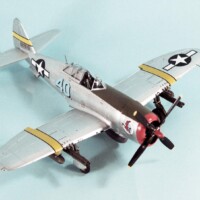
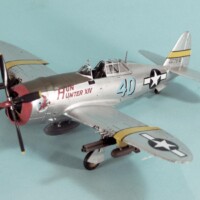
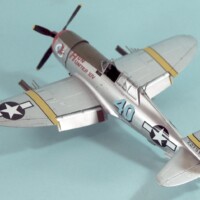
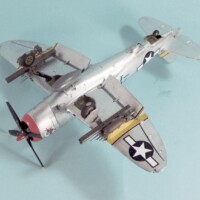
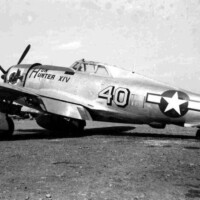
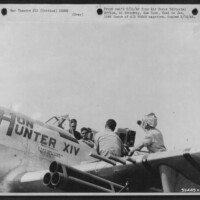
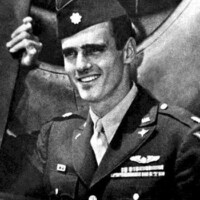
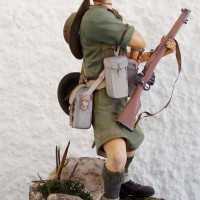
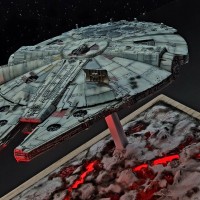

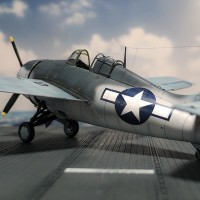
Ironically that you posted this one Tom. I was just looking at my Tamiya P-47 with the decals for Major Glenn Eagleston. I have been thinking about building a Thunderbolt for a while now. Yours really looks great ! Nice well written article too.
This is a fitting tribute for a great man on Memorial Day weekend.
Nice looking model and great history. It sure would be nice if a kit maker would produce a later version of this aircraft
Actually, Tamiya does the bubbletop D and the M.
Informative "backstory", TC, but you neglected to tell us anything about which kit you used. I'm assuming it's a 48th scale Tamiya - is it a current project or one you did some time back?
You can see the review over at Modeling Madness this past Thursday.
Nice model. Good history.
Nice story, nice model, thank you Tom !
A real beauty Tom, and very well Presentated!
Nice job. I went to High School with "Whispering John" Landers' daughter...but that's another story and another airplane.
great Jug! and info.
Beautiful thunderbolt and terrific testimony for memorial weekend.
Great job, Tom. Fantasic looking Thunderbolt...Now I'm gonna have to work on one of those too...
I've seen some of the various Hun Hunters (photos of the real ones and plastic) & I think there is a '47 flying in this livery.
Awesome job, Tom!
Hun Hunter XVI - P-47D-40
Good lookin' T-bolt. Those blue number are very unusual looking!